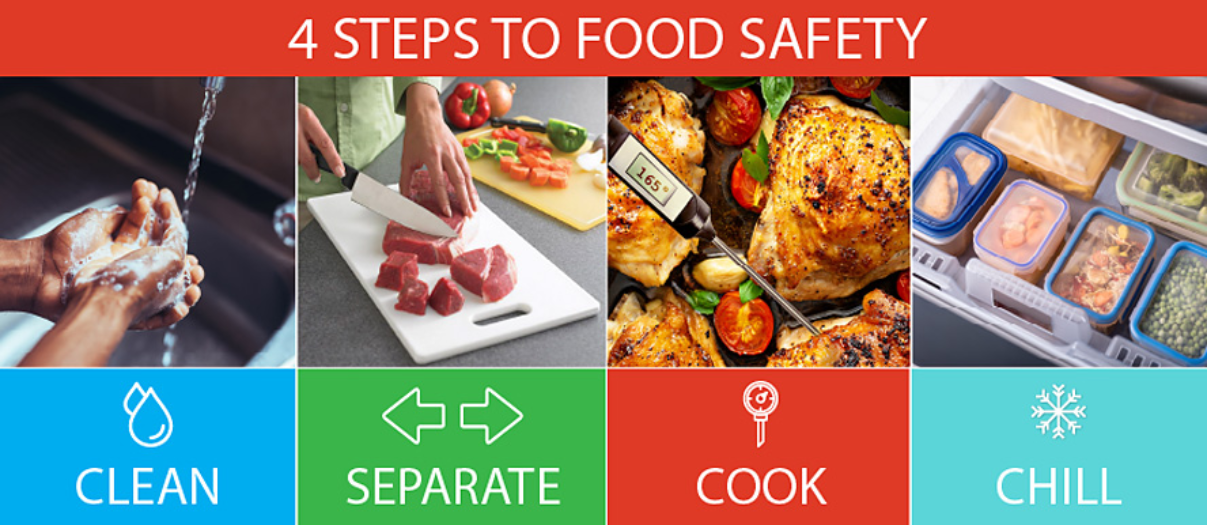食品安全四步骤:清洁、分离、烹饪、冷藏

Following four simple steps at home—Clean, Separate, Cook, and Chill(冷藏)—can help protect you and your loved ones from food poisoning(中毒).
Clean: Wash your hands and surfaces often.
◎ Germs that cause food poisoning can survive in many places and spread around your kitchen.
◎Wash your hands for at least 20 seconds with soap and warm or cold water before, during, and after preparing food and before eating. Always wash hands after dealing with uncooked meat, chicken, seafood, or eggs.
◎Wash the cooking tools, cutting boards, and surfaces with soap and hot water after preparing each kind of food.
◎Wash fresh fruits and vegetables under running water.
Separate: Don’t cross-contaminate(交叉污染).
Uncooked meat, seafood, and eggs can spread germs to ready-to-eat food unless you keep them separate.
◎ When you go shopping, keep raw meat, seafood, and their juices away from other foods.
◎Keep meat, seafood, and eggs separate from all other foods in the fridge. Store them in boxes so the juices don’t get into other foods.
◎Use one cutting board for meat and seafood, and a separate cutting board for produce, bread, and other foods that won’t be cooked.
Cook to the right temperature.
Food is safely cooked when the internal temperature gets high enough to kill germs that can make you sick. The only way to tell if food is safely cooked is to use a food thermometer(温度计). You can’t tell if food is safely cooked by checking its color and texture (except for seafood).
Chill: Refrigerate promptly.
Germs grow rapidly if left at room temperature or in the “Danger Zone” between 8℃ and 60℃. Keep your fridge at 8℃ or below and your freezer at 0℃or below, and know when to throw food out before it goes bad. For example, the right temperature for ham is at 8℃ or below, but do not freeze, or it will go bad.
1. What does the underlined word “raw” probably mean?(词义猜测)
A Processed.
B Uncooked.
C Convenient.
D Locally produced.

